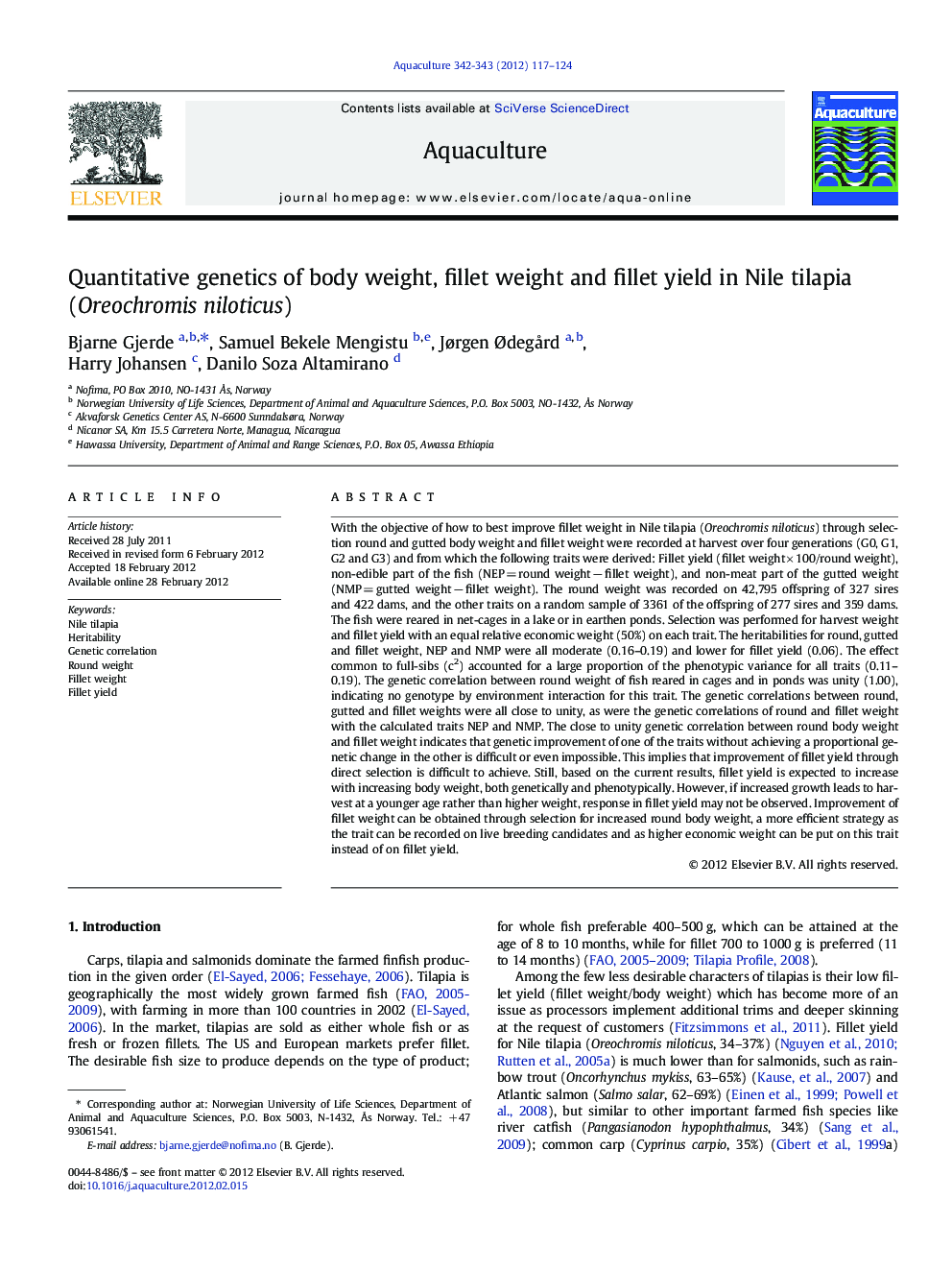| کد مقاله | کد نشریه | سال انتشار | مقاله انگلیسی | نسخه تمام متن |
|---|---|---|---|---|
| 2422602 | 1552892 | 2012 | 8 صفحه PDF | دانلود رایگان |

With the objective of how to best improve fillet weight in Nile tilapia (Oreochromis niloticus) through selection round and gutted body weight and fillet weight were recorded at harvest over four generations (G0, G1, G2 and G3) and from which the following traits were derived: Fillet yield (fillet weight × 100/round weight), non-edible part of the fish (NEP = round weight − fillet weight), and non-meat part of the gutted weight (NMP = gutted weight − fillet weight). The round weight was recorded on 42,795 offspring of 327 sires and 422 dams, and the other traits on a random sample of 3361 of the offspring of 277 sires and 359 dams. The fish were reared in net-cages in a lake or in earthen ponds. Selection was performed for harvest weight and fillet yield with an equal relative economic weight (50%) on each trait. The heritabilities for round, gutted and fillet weight, NEP and NMP were all moderate (0.16–0.19) and lower for fillet yield (0.06). The effect common to full-sibs (c2) accounted for a large proportion of the phenotypic variance for all traits (0.11–0.19). The genetic correlation between round weight of fish reared in cages and in ponds was unity (1.00), indicating no genotype by environment interaction for this trait. The genetic correlations between round, gutted and fillet weights were all close to unity, as were the genetic correlations of round and fillet weight with the calculated traits NEP and NMP. The close to unity genetic correlation between round body weight and fillet weight indicates that genetic improvement of one of the traits without achieving a proportional genetic change in the other is difficult or even impossible. This implies that improvement of fillet yield through direct selection is difficult to achieve. Still, based on the current results, fillet yield is expected to increase with increasing body weight, both genetically and phenotypically. However, if increased growth leads to harvest at a younger age rather than higher weight, response in fillet yield may not be observed. Improvement of fillet weight can be obtained through selection for increased round body weight, a more efficient strategy as the trait can be recorded on live breeding candidates and as higher economic weight can be put on this trait instead of on fillet yield.
► Fillet weight and body weight have close to unity genetic correlation.
► Unlikely to improve fillet weight beyond the gain through selection for body weight.
► Selection for increased fillet yield is not likely to be successful.
► Still, fillet yield is expected to increase with body weight.
► Increased fillet yield may not be observed if harvested at a younger age.
Journal: Aquaculture - Volumes 342–343, 15 April 2012, Pages 117–124